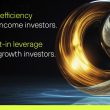by Liz Ann Sonders, Chief Investment Strategist, Kathy Jones, Head of Fixed Income, Charles Schwab & Company Ltd.
Now that the yield curve has uninverted, what can we expect from the markets as we approach next week's Fed meeting?
LIZ ANN SONDERS: I'm Liz Ann Sonders.
KATHY JONES: And I'm Kathy Jones.
LIZ ANN: And this On Investing, an original podcast from Charles Schwab. Each week, we analyze what's happening in the markets and discuss how it might affect your investments.
KATHY: Well, I'm calling in from the road today, so I apologize if the sound isn't great, but it has been great being out seeing and talking with clients so far this week. So Liz Ann, let's just jump into it. The unemployment numbers last week were a bit of a mixed bag, pretty much in line with the soft landing, so we're still looking for a 25-basis-point cut at next week's Fed meeting, but maybe the bigger news on the fixed income side was that Treasury yields, or the yield curve, 2-year versus 10-year, uninverted. And that's a bit of normalcy that we'd expect with these soft-landing indicators. I'd also point out the stock market is not a lagging indicator. But how did the market react to last Friday's jobs report? And what does that tell you about the state of the economy?
LIZ ANN: Kathy, that's a great question. You're right. The stock market generally is a leading indicator. But when we're in the environment we're in now where the Fed is keying off of incoming data, some of which is lagging in nature, that means that arguably the stock market can be a bit more reactionary even to data that is lagging in nature. I think there were multiple reasons why the market, at least as of you and I taping this, seems to be in a bit of a sell-off mode right now since the recent high at the very end of August. And I think the weaker jobs report may have been one of them.
I think we've probably addressed this maybe on a past episode or two, but I think we're at the point in the cycle where bad news isn't good news simply because it means the Fed is going to cut. That's the built-in expectation. You're in the 25-basis-points camp. I'm in the 25-basis-point camp. That's where the market has aligned right now, especially given a tiny little bit hotter CPI report that just came out today as you and I are taping this. So I think now the market is keying off of weaker economic news as more of a negative than a positive. So we have seen this renewed sell-off in the market since that recent late-August high. What about you Kathy, any other thoughts on where we are now as we as we, you know, barrel into the long-awaited initial rate cut by the Fed?
KATHY: Yeah, you know, coming into this, prior to the CPI number, there was still this question, well, will they cut by 25 basis points, or will they cut by 50? I think the market is coalescing now around 50. As you mentioned, the CPI was just a tiny bit higher than expected. And the economy, although it certainly is soft, it doesn't look like it's falling off a cliff. So I think the expectation is pretty solid around 25 basis points.
But we'll also get a renewed summary of economic projections that includes a dot plot, where each of the Fed members puts their projections for where they think the fed funds rate is going over the next couple of years. And I think that's going to be the big important information that we look at. So based on the last numbers, it's pretty clear the Fed's going to have to upgrade its economic growth projections because those were pretty low, and we had a good solid 3% gain in the second quarter, so you know, projecting less than 2.1% for the year seems too pessimistic, so look for an upward adjustment there. And the inflation projections, though, should be lowered. The Fed had a year-end projection for core PCE at 2.8. It's already at 2.6, looks like it's going to fall further, so I would expect that that should come down, which is good news.
The unemployment rate, that's going to be an interesting one. Unemployment is now at 4.2%. The target that they expected for year-end was 4%, so already above that. So those have to be adjusted. As for the dot plot, that's where I'm going to be really focused because presumably we'll see downward revisions for the next few years of what is expected to be the fed funds rate for most of the members.
It showed at the last time only one Fed rate cut this year, I think two to three more likely. So that'll have to be adjusted. And then finally the big number is, you know, what is the destination? So we've already been told the direction of travel is down, but what is the destination? And that is going to be interesting. Last time the terminal rate, as they call it, the low end of where we are going for the cycle, came in at 2.6%, just nudged up a little bit from 2.5. And there's a lot of debate around just how low yields can go in this cycle. There's some economists who say they can only cut to 3.5 to 4%. And others are looking for 2 to 2.5. So I'm going to be really interested to see where the median estimate is on that and the dispersion around it. Are there Fed members who think 4% is as low as they can go?
Of course, all these are just forecasts. The market's going to be trying to assess the Fed's collective thinking on policy, but as we know, these things can change.
LIZ ANN: You know, Kathy, I wanted to jump in because you had mentioned in the beginning of your remarks about the un-inversion of the yield curve, the 2s/10s version of the yield curve. And there's some interesting data on the history of those un-inversions in terms of what the stock market has done in the, call it 6 to 12 months after the un-inversion. And there is a wide range. And this is something that we have cited quite frequently as it relates to, whether it's yield curve related or Fed policy related. You have to be mindful of a relatively small sample size at a very wide range of outcomes, but where you do see a fairly distinct difference in terms of market behavior once the yield spread uninverts is recession versus soft landing. And maybe that's intuitive, but an uninversion that is accompanied by a soft landing and not a recession that brought with it much stronger stock market performance relative to an un-inversion that is accompanied by or maybe a reaction to a recession.
Not that anybody is cheering for a recession, of course, but from a market backdrop and based on history, clearly a soft-landing scenario would be to the benefit of equities relative to a recession scenario.
KATHY: Yeah, there's no doubt about it. And I think the market is still kind of up in the air about where we go from here, whether it's soft landing or recession. I'm hearing voices on both sides. So fingers crossed for the soft landing, right? Nobody wants to see a recession.
So Liz Ann, we have a familiar face, or I guess I could just say voice, joining us today on the episode.
LIZ ANN: That's right. We've got our own Kevin Gordon here in the studio. He is a director and senior investment strategist on my small but very mighty team. Many listeners have probably seen him on TV, heard him on radio, hopefully on this podcast as well. He's a frequent guest on CNBC's Closing Bell, Bloomberg Surveillance, and many other shows.
So Kevin, thanks so much for joining us.
KEVIN GORDON: Yeah, it's great to be back.
LIZ ANN: So Kevin, last time we had you on the show, one of the things that we discussed were sectors and what we call Schwab Sector Views and what the ratings are for those sectors. As a reminder, there are 11 sectors within the S&P 500®. So since we have you back on, maybe we could start with a discussion of any changes to the sector ratings in the past month or two and maybe just a little bit of forward-looking outlook with regard to those sectors, but maybe answer it in the context of our ongoing, maybe even greater focus on factors, not just sectors. So take it away.
KEVIN: Well, the sector change that we made most recently was to bring real estate from an underperform to a marketperform. So that was, you know, official, you could say a few weeks ago, you know, late August when we made that adjustment. I mean, just as a reminder, you know, wherever folks find our research online, that's where the sector research is, too. So you can find, you know, the most recent outlook that we have there, and it was published August 23rd. But, you know, a lot of it was driven by, as you mentioned, the factors that we look at, profitability being one of them where the sort of longer-term prospects for profitability really started to improve and look a little bit better for the sector. And I think, probably, it's understandable given the yield environment we've been in and given the pretty severe negative correlation between real estate performance and yields themselves. The fact that yields have taken such a pretty drastic turn to the opposite direction versus where they were a year ago—that's really helped the sector. It's really helped sort of the prospects and the fact that the Fed is going to start cutting. And you know, that's not the only thing that we should be watching. But if you think about the stress that real estate has been under for, you know, a pretty good chunk of time and the fact that lower yields are generally going to be a good thing, presumably for the sector, it makes sense to sort of bring it up. So that's what we did.
We've still just as a reminder, we've got consumer discretionary as the sole underperform. And then for the outperforms, we still have financials, energy, and materials. I will say, and I think it's always good to have a little humility, maybe a lot of humility in markets, but you know, I probably have the, maybe the least conviction right now on energy and materials given the commodity backdrop that we're in right now, especially in the global space. You look at the pressure that, you know, oil in particular has been under, but everything metals-related that has unsurprisingly directly correlated with some weakness in energy and materials. And in fact, you know, energy is arguably the weakest sector right now in terms of longer-term breadth.
We just sort of broke through, you know, a pretty key low earlier this year in terms of the percentage of companies in that sector that are trading above their 200-day moving average is the metric I really like to keep an eye on. So I don't think that it's sort of a drastic turn for the sector or, you know, energy and materials in particular, but I think it's worth keeping an eye on, especially if the global backdrop continues to soften as it has.
LIZ ANN: Yeah, Kevin, I'm glad you mentioned that because you used energy as an example, but I think it gets to the broader point of one of the reasons why we tend to have a little bit more of a factor focus versus a sector focus. And as a reminder, "factors" is just another word for characteristics. And there can be so many forces that drive volatility at the sector level, some of which have nothing to do with actual fundamentals. I'm not suggesting that's the case with energy, but you can get sentiment swings, positioning swings that aren't really supported by fundamentals. A lot more volatility in terms of where sector leadership resides and the shifts that can happen there, where there's been a bit more consistency in terms of leadership at the factor level. And we're just in favor of the notion that if you're screening, you can screen for, and we've had a focus on high quality, so screen for factors around profitability and strength of balance sheet and cash flows, and apply that screening to all 11 sectors, because no matter where the leadership shifts are within sectors, there are winners and losers within each individual sector.
So I'm glad you mentioned energy, and I think it's a good example of that that broader focus that we have had a little bit more on the factor level than on the sector level. Speaking of sectors, I want to ask maybe a two-part—who knows, it might go into more parts than that—on just the recent changes in leadership and some of what we've seen in terms of breadth, but I'll start with, I guess, a crowd favorite in terms of a subset of the market that isn't really sector-specific but category-specific, which is the Magnificent Seven. Clearly there's a bit of a tech bias there, but the Magnificent Seven, which is only seven stocks, it's actually covers three individual sectors: tech, communication services, and consumer discretionary. And clearly we have seen some shifts in leadership there even when the market found its intraday low on August 5th after the sell-off that began in mid-July that brought, in the case of the NASDAQ, that index into correction territory. Even the rebound since then has been relatively anemic in the Magnificent Seven, and that there have been some cracks forming even in the facade to some degree of NVIDIA. So talk a little bit about that leadership shift away from the Magnificent Seven, and then we can sort of branch a little bit more into kind of that broader breadth improvement story.
KEVIN: Yeah, I think it's an important shift, and ultimately, and we'll get to this at the end of this question, I think ultimately a healthy thing. And so much of the gains for a good chunk of this year, really when we got to call it mid-June, late June, had been driven by, in terms of contribution, not necessarily performance, which I'll make that distinction in a bit, but had been driven by those names. They're such a large part of the index, the top 10 names in the S&P 500 are around almost 40% of the index, which is, as far as we can tell on the data that we have going back several decades, it's a record high. And I think often that's pointed to as a bad thing, but it's not necessarily a bad thing in and of itself if the rest of the market is doing relatively well, which at points in the past couple of years, there have definitely, and you and I have written about it, talked about it a lot, there have been points where the so-called soldiers of the rest of the market just hasn't been able to catch up or keep up with the performance in the Mag Seven.
What I find really interesting, and it comes up a lot in client events, it comes up a lot when I talk to the media, is this perception that because they're the largest stocks, that they're the best performers. And this year, year-to-date performance, is sort of the clearest indication I can find or think of where that's just not the case. And even as of yesterday's close, and this is data that you and I look at every single morning, Liz Ann, as of yesterday's close, the best performing stock in the S&P 500 was NVIDIA, probably, you know, not a surprise to folks, you know, got a triple-digit-percentage-point gain. The one of the worst performers, it's not the worst performer, but it's ranked 417 out of 500, is Tesla. Both of those names are in the Magnificent Seven. They clearly have different performance profiles year-to-date. They are definitely in different sectors. And I think they, you know, sort of help tell the story, that dispersion in performance helps tell the story, of why these large companies and the largest companies are not always going to be the best performers.
By the way, shifts from year-to-year can be pretty drastic. So even as Tesla is ranked 417 this year, its performance ranking in 2023 was 10. It was the 10th best performer. So it's coming off of a pretty magnificent year where the gain last year, you know, it doubled in 2023. And this year it's been under pressure. It's down by almost 10% year to date. So you know, it speaks to obviously what, you know, we talk about about diversification and the fact that you don't want to be so heavily concentrated in, you know, a few names or just seven names, which I don't think any particular investor is only in seven names. But I think it speaks to the broader story of when we do go through these rotations and these leadership shifts, they can weigh on indexes because of the size of these companies. But also the fact that you're never guaranteed great performance, but you're not always going to get great performance from a company simply because of its size. Yes, there's going to be a large contribution to the index because of its weight, if it goes up even just a little bit.
But that's not necessarily going to directly correlate or translate to really good performance.
LIZ ANN: Yeah, and I'm glad you mentioned that because one of the other aspects of this that we have been discussing is most relevant to individual investors. I think that there's a misperception that the only way to perform well in the equity market, maybe at least up until the mid-July highs, has been to own a group like the Magnificent Seven and in similar size, either in an absolute sense or a relative sense. But that's a misperception. That may be an appropriate reminder to the institutional world that might be running a fund that is benchmarked to the cap-weighted S&P or the cap-weighted Nasdaq. And as a result, the only way for them to have any hope of outperforming that benchmark is to have similar exposure in those dominant names. But for individual investors, that's not the game that they're playing. And to your point, Kevin, when looking at the Magnificent Seven, and you run this for me every single day, the top-10 best performers in the S&P 500 year-to-date, only one of them, and it's NVIDIA, is in the Magnificent Seven. And if you do the same ranking of the top-10 best performers in the Nasdaq, not a single one is in the Magnificent Seven. None of them are large or mega-cap names. Most of them are in the kind of midcap range, and none of them are household names. So you're absolutely right to point out that they're the biggest contributors to the performance of these cap-weighted indexes, but that's by virtue of the multiplier of their size, not because they're the best performers. So I think it's just an important reminder to individual investors to not … so that they don't think they have to kind of play that institutional game.
KEVIN: I think the other thing too, we talked, when we broadened this out or kind of zoom out and talk at the sector level is also understanding which, and you mentioned this at the beginning with the question, but understanding which sectors these companies are in. It often gets phrased as "big tech." And yes, tech is almost 31% of the S&P. So it's definitely a large sector, but they span three different sectors, and three different sectors that do very different things at very different times. And even if you go over the past couple of years, and I'm remembering back to when we wrote our mid-year outlook and our theme around K-shaped recoveries and how there were some parts of the market and the economy that were doing quite well. And there were some parts that have not been doing well at all, particularly since the Fed started raising interest rates.
But even if you looked at the three sectors that are in focus for this discussion, communication services and tech for a while were sort of leading the charge. And they were moving neck and neck with each other, but consumer discretionary was lagging behind. And a big reason for that was of course the drag from Tesla, but also just the cyclical parts of the economy and the market that have been struggling a little bit more as we've been in this higher-for-longer interest rate regime. So I think that's an important aspect too, because if investors are more sector-focused and they're investing in products that are tracking specific sectors that are in particular cap-weighted, you do have to understand how much of a sway some of these companies are to have for that particular sector. So for tech, Apple and Microsoft make up more … about half of the sector. For communication services, Alphabet and Meta make up about 70-ish percent of the sector. And for consumer discretionary, Amazon and Tesla make up about 40%. So you're going to get a huge swing from just a handful of names. And by the way, it's not just those three sectors. Energy is also pretty heavily concentrated. Chevron and Exxon are about 40% of the energy sector. So it exists in areas that you may not think to be sort of prone to that concentration risk, but I think that really has to come into focus, especially because there has been, I think, a pretty decisive and notable leadership shift that you were alluding to earlier, particularly since the mid-July high for the S&P.
LIZ ANN: You know, one of the other important leadership shifts that has occurred is toward more interest-rate-sensitive segments of the economy, like you already touched on with real estate, not only having moved up in our rankings a few weeks ago, but clearly displaying some of the best breadth performance. So let's maybe go a little bit more macro here.
We started at the slightly more micro level, and I want to take it back to what Kathy and I were discussing before you came on and what you've already touched on to some degree. And we recently wrote a report on the lead-in to an initial Fed rate cut and what to expect based on history in terms of market behavior going from the pause part of the cycle, which we've been in for more than a year to the cutting part of the cycle. I touched on it earlier as it relates indirectly to the un-inversion of the yield curve and how that's manifested itself in terms of performance for equities. But maybe just give us some highlights from that report as we head to what we assume will be the start of a cutting cycle and some of the more interesting takeaways from that research that we did that went into that report.
KEVIN: Yeah, so we wrote it about a week ago. It's titled, "It's Time … For a Fed Pivot." So sort of a nod to some of the speeches that the Fed members have been giving lately, but the essence of it, and we did a really deep dive, and we had really great aid and research from Ned Davis's extensive library of research that they have. They've just been such a great resource in general for us, but the whole essence of it is looking at the difference between fast and slow Fed cutting cycles. So we analyzed 17 cutting cycles over the past several decades. And a fast cycle is when the Fed is cutting aggressively, either every single meeting and/or by 50 basis points because they're presumably responding to some sort of financial crisis or a recession. And then the slow cutting cycles are pretty much the opposite. They're taking a more methodical approach, and it's slower, where maybe they're cutting every other meeting or just a handful of meetings, and then they stop. But that's because they kind of have the ability to. They could take it slower. They're not responding to a recession. They're not responding to any kind of financial crisis. So what we did was we looked at the S&P 500 in particular, the max drawdowns and the volatility associated with both kinds of cutting cycles. And it's probably somewhat intuitive, but you get much more drastic downturns and much more severe drawdowns when you go through a fast-cutting cycle. They're typically consistent with bear markets, and the average max drawdown within a year after the cutting cycle starts, for a fast-cutting cycle, is you're in bear market territory. It's almost down 21%. Much less severe if you're in a slow-cutting cycle, the average max drawdown is just slightly more than 7%. So there's a pretty clear split there, and it kind of gets to the punchline of how we both open the report but also ended the report, which is if you're, as an investor, as an economic watcher, as a Fed watcher, if you're really gunning for them to start by cutting, start the cutting cycle by cutting by 50 basis points if you want them to go aggressively, it's kind of a be-careful-what-you-wish-for moment because typically, as history has shown, and as we put in the report and detailed in tables and charts, it just tends to be consistent with a much weaker equity market backdrop.
It's not up to us what the Fed ultimately does. And of course, this cycle is very unique in so many ways. So I want to be careful about using history as a pure guide. But at the same time, I do think that we have to start paying attention to if the economic data are telling the Fed that it's time to get more aggressive, it's probably not going to be the best signal for the stock market.
LIZ ANN: So Kevin, it's always great to have you on, and you mentioned a couple different reports. We've got the report that we just wrote a week ago on Fed cycles and what to expect for the market. We'll put a link to that in the show notes, as well as Sector Views, which you touched on in the early part of our conversation. We'll make sure there's a link to that sort of area within the Schwab.com website. So thanks for mentioning those, and thanks as always for coming on. You and I talk all the time every day, but I'm glad we get to provide an avenue for listening to our conversations to our audience. So thanks.
KEVIN: It's always good to be back. Thanks for having me.
LIZ ANN: So Kathy, next week we have the much-anticipated big FOMC meeting, of course. Maybe it's futile to look to precedence in this cycle, but how has the bond market reacted in the past when the Fed has started a rate-cutting cycles? And what are you expecting in terms of bond market reaction to what we assume is 25 basis points at the next meeting?
KATHY: The bond market sees it as a positive almost all the time. I think the question this time around in this cycle is that the market's already discounted a pretty steep drop in yields and a lot of cutting over the rest of this cycle. So there may not be as much bang for the buck, as we say, when the Fed cuts especially just 25 basis points. But I'd also say, "Don't fight the Fed." It's true in the bond market as well as in the stock market, maybe even more so in the bond market than in the stock market. I think the biggest trend we're going to see, barring a recession, is the bull steepening of the Treasury yield curve. That is where yields fall across the yield curve, but with short-term rates falling more rapidly than long-term rates, and as we were talking about earlier, the un-inversion of the yield curve is probably just a way of saying it's returning to a normal shape after more than two years of being inverted. So my guess is the bond market's going to sigh a sigh of relief and say, "OK, this is good news. We already knew this was coming, but now we'll see if we can build in more rate cuts down the road." What about you, Liz Ann? With all the data out there, what are you looking at next week?
LIZ ANN: Yeah, so I think every week these days is important in terms of economic data, but I think some of the key reports that we'll be paying attention to are retail sales. We also get industrial production and capacity utilization. A number of really important housing-market indicators, which I think increasingly are in attention because for obvious reasons as the Fed looks to start cutting interest rates and what has already happened to yield. So there's the NAHB Housing Market Index. We get mortgage applications, building permits, and housing starts. They're two key leading indicators. And then in conjunction with what we already discussed and last month's jobs report, we've got claims and the component parts to that. And I think that sort of fills in the blanks in between these monthly numbers, and then we also get the Leading Economic Index. So it's a week chock full of, I think, important data.
So that's it for us this week. As always, thank you so much for listening. As you can always keep up with us in real time on social media, I'm @LizAnnSonders on X and LinkedIn. I'm only active on X and LinkedIn. If you see me on Instagram and Facebook, it's not me, it's an imposter, I guarantee it. Don't follow them, don't engage, it's not me. So make sure you're following the actual me on X and LinkedIn.
KEVIN: Same with me, I'm also on X and LinkedIn, and you can follow me @KevRGordon.
KATHY: And I'm @KathyJones. That's Kathy with a K on X and LinkedIn. And if you've enjoyed the show, we'd be really grateful if you'd leave us a review on Apple Podcasts or rating on Spotify or feedback wherever you listen. You can also follow us for free in your favorite podcasting app. By the way, all of our episodes are also on YouTube in case you prefer listening there. Next week, we are thrilled to have Claudia Sahm back on the show. So stay tuned for that. We'll talk to you next Friday.
LIZ ANN: For important disclosures, see the show notes or visit schwab.com/OnInvesting, where you can also find the transcript.














